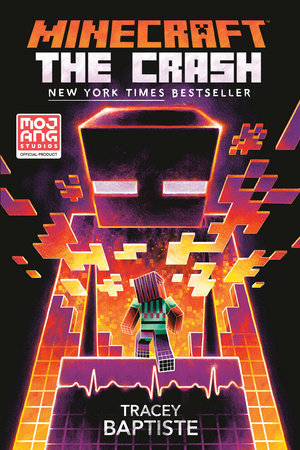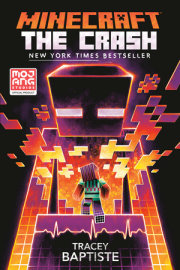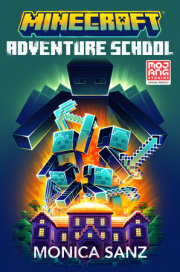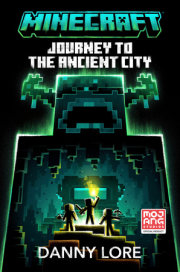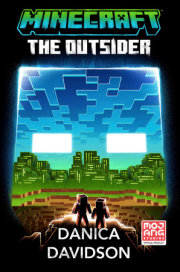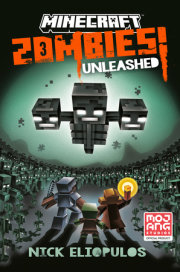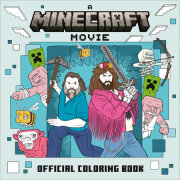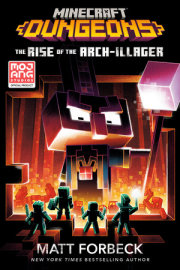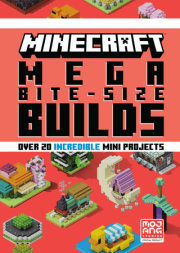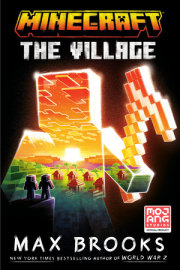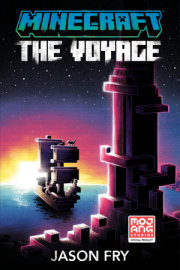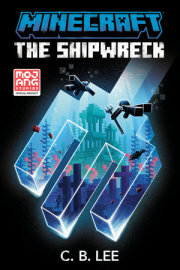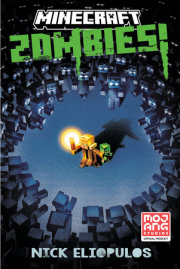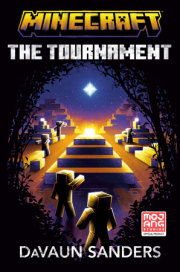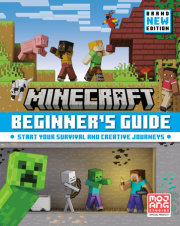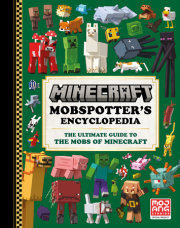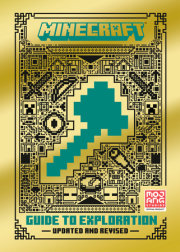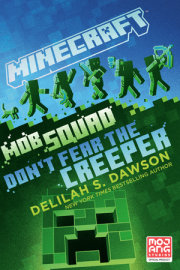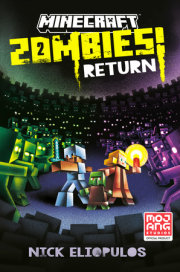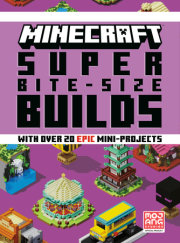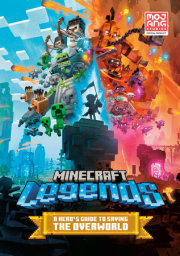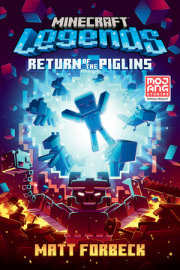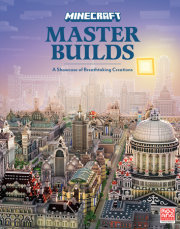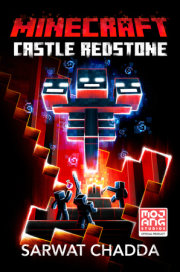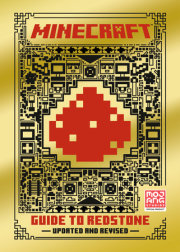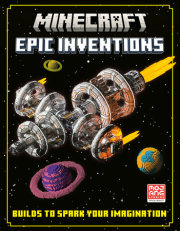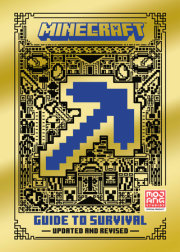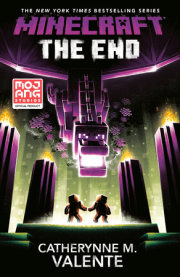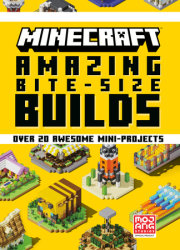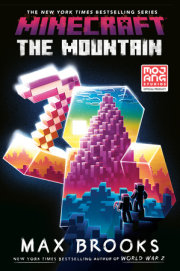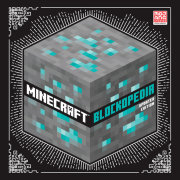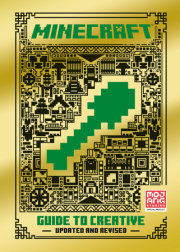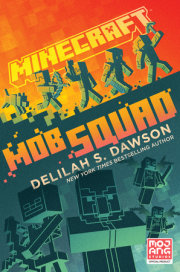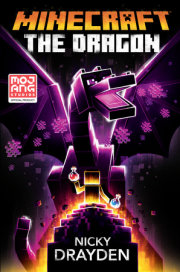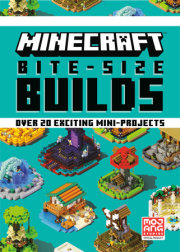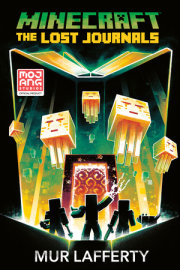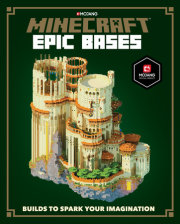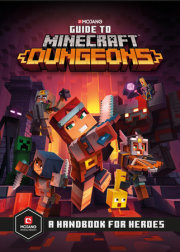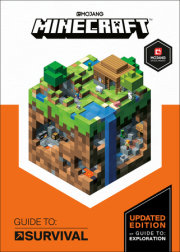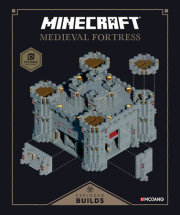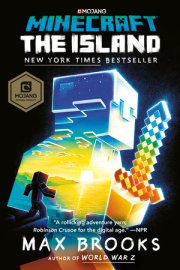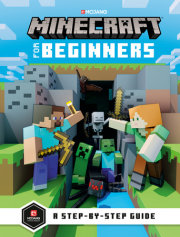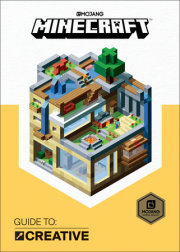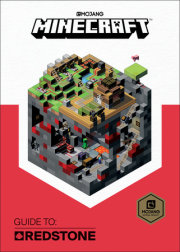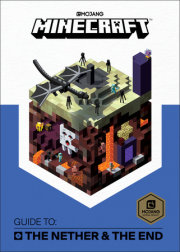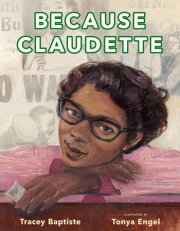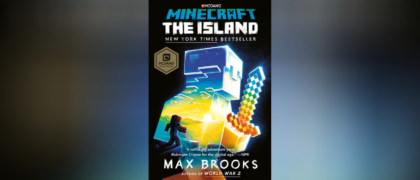I was getting used to moving around in the game. There was one thing that I really wanted to try. Flying. From the top of the hill, I jumped twice, expecting my avatar to soar into the sky. Instead, I tumbled down a few blocks. Must be survival mode and not creative, I thought. I climbed back up and looked around. On the other side of the hill, in the distance, was a field of brown. A desert biome, I guessed. There didn’t seem to be any villagers or buildings, so I turned and went north, following the curve of the river. I ran past mobs of pigs and sheep, clumps of trees, and fields of flowers. Much farther away, things turned green. Swampy. I’d have time to explore all of that later. What I wanted was to check out the village on the other side of the river. So I turned my gaze, and the entire world turned beneath me, pointing me in the direction of the village near my home base.
Running in the game felt amazing. The world whizzed by me, and the exhilaration of being able to sprint around was intoxicating. I could almost pretend that they were really my legs pumping beneath me, sending me flying through the Technicolor scenery. “Optical illusion,” I said out loud. I knew I was really lying in bed in a hospital room, and the entire world around me was a projection of light that extended only as far as the goggles did. It wasn’t real. None of it.
It reminded me of a unit we did on optical illusions with my eighth‐grade art teacher, Mrs. Franklin. I loved it. There was the Necker cube—a cube drawn in two dimensions—that you could see two different ways depending on which plane you decided was “front” or “top,” and also the Hering illusion, which showed how a at illustration could appear to curve or even move with a series of strategically placed straight lines. But my favorite was the snake illusion, a circle of colors that only seemed to move when you weren’t looking directly at it. It seemed like magic, like the colors themselves had a mind that could read me, and know when I wasn’t looking, and prank me for its own pleasure. Even when we’d moved past the optical illusions unit, I was still making snake illusions, pretending that they were actively trying to interact with me, but only on their own terms.
“Vision is one of the primary ways we process the world around us,” Mrs. Franklin had said. “But always remember, eyes can be tricked, which in turn can trick your brain.”
I stopped near the edge of the river and batted a nearby flower, but nothing happened, so I went on my way.
“Everything really is an illusion here.”
At the water’s edge, cubes of blue indicated a narrow river, and cubes of brown and green on the other side told me there was land. If I wanted to, I could count up the squares and know exactly how many cubes made up my vision, but why spoil the fun? That would be like going to a magic show and calling out all the ways the magician was making the tricks happen. First of all, it’s rude, and second of all, it ruins everything. Despite it being an optical illusion, I was happy to be where I was, standing by a river, instead of lying down in my own dull reality.
From this side of the river, the village looked enticing. I opened up the crafting table, silently thanking A.J. again for giving me a full inventory at the start, and made planks of wood. Then I constructed what I thought was a pretty solid, sturdy boat. A sheep wandered over as I finished. It looked up. Not at me, just up, as I pushed off across the river.
“This is pretty cool. I gotta hand it to you, kid,” I said to A.J. out in the real world.
The sheep lumbered off, and A.J. didn’t say anything.
I looked at the water as the boat crossed the river. I wished I could dip my hand into the water and feel it, but I knew that wouldn’t happen.
“Illusion, illusion, illusion,” I said aloud. I laughed for the first time in . . . I didn’t know how long.
The boat slowed as it got to the other shore, and I hopped out. Ahead was the little village, which looked much bigger now that I was so close up. Immediately a few of the villagers turned to look at me, and in a few moments I was surrounded by villagers muttering at me in several slightly different tones.
So, a couple of things. First, we were all the same size. I’m used to being short and having to look up at people, so that was weird. And second, all of them were looking at me with these blank, unfeeling eyes that I thought I’d be used to from playing the game, but something about the way their glances seemed to bounce right off me made me feel cold. I muscled my way through the throng of villagers and walked toward the first building— a butcher’s shop. There was a bench outside and a pen around the back. This was all usual stuff, but I didn’t expect that walking up to the building would feel so impressive and realistic. The door even squeaked a little as I went in. The butcher looked up and muttered in my direction, but when I didn’t engage, it went back to working on something behind the counter. I thought about the meat I could get from the butcher, and that alone was effective enough that I thought my stomach actually rumbled. I wondered when the last time was that I’d had a solid meal. I didn’t remember eating anything since before the accident. I wondered what had happened to my brownies. There was the IV drip, which I guessed was keeping me packed with nutrients, but what I was suddenly craving was a ham sandwich.
I picked up some pork, and the butcher came over. The trade popped up just over the villager’s head, so I made it and walked out. The butcher muttered again at my exit.
With my VR hunger satisfied, I went back over to the water right outside the village and began to work on phase one of Lonnie’s master plan—making obsidian for the nether portal. Everyone knows that if water hits a lava source block, it becomes obsidian. Most players would just carry some buckets of water into an underground cave, but Lonnie always had an air for the dramatic. It was his idea to dig down until we hit a lava pool, then divert an entire river into it.
“Just imagine it!” he’d said as he showed me his schematics. “A waterfall into lava and boom, obsidian for days!”
“Man, now I really wish you were here, Lonnie,” I whispered. He would make the work go by much faster. If I could have rolled up my sleeves in Minecraft, I would have. “Let’s do this,” I said to no one, dusting my palms together. Well, my limbs didn’t really touch. My block hands moved near each other in a way that looked more like I was about to play rock, paper, scissors, with only the obvious draw as the outcome. Not having actual hands was a minor drawback, but there were many advantages in my new pixelated existence, too. Using the pickaxe in my inventory, I started digging out a new ow from the main river.
After a few minutes of working, I felt the weight of someone looking at me. I knew that I was inside a game. I knew that this was all an illusion. But that look felt real somehow. It was like those intense looks you feel when you can tell someone is staring at you from across the room, even if your back is turned.
“This is ridiculous,” I said. “It’s just a game.”
Still, I turned to look. A villager in a dark blue shirt with a large X crisscrossing it stared at me from across the river near where the boat was docked. I blinked a few times, wondering if I was just being weird, or maybe I was getting disoriented again. But the villager simply stared back.
A spark of recognition ignited in my brain. The back of my neck prickled. I knew someone with that exact T‐shirt. “L‐Lonnie?”
I could almost feel my pores constrict. How was this possible? It wasn’t Lonnie’s avatar, by any means. It lacked his skin mods and cape. But no doubt about it, the villager was somehow Lonnie.
The strangely dressed villager suddenly disappeared back into the village.
“Hey, wait! Come back!”
I took off after it. My mind was racing. Was there a glitch when Lonnie tried to log on, and he somehow got zapped into a villager?
I was running past the shops and houses, down a cobblestone street that turned away from the river and toward that villager. Every turn, the Lonnie villager eluded me, and ran down another path. I chased until I couldn’t orient myself anymore, and I had to look around for the hills to know which way the river was, and therefore home base. I turned down what seemed to be an abandoned alleyway that was more crudely constructed than the rest of the village, and found myself staring down a villager in the shadow of one of the buildings. I moved forward, and it moved forward too, matching me step for step. I moved to the side. So did it. Now it was in the light and I could see that it was the same villager again. Blue shirt. Big X across the front. I could feel adrenaline start to pump through me. My head hurt for a couple of seconds, but then it stopped.
Copyright © 2018 by Mojang AB and Mojang Synergies AB. All rights reserved. No part of this excerpt may be reproduced or reprinted without permission in writing from the publisher.

